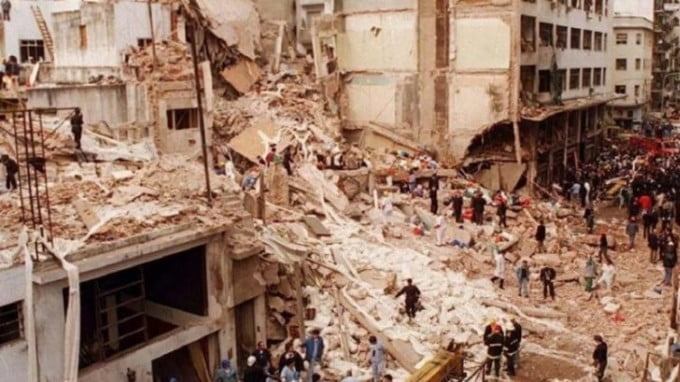At What Cost are the US and its NATO Allies Withdrawing from Iraq?
Numerous news outlets have been reporting that discontent is growing among the public in Middle Eastern countries with the presence of coalition forces on their territory, and the most frustration being caused by the American troops stationed there. This is particularly evident in Syria and Iraq, where the real reasons for this military presence are becoming more and more apparent: to seize and control oil-producing areas to serve America’s own interests, and to use Syrian and Iraqi soil as a springboard to counter Iran rather than as part of the “war on terror”, which Washington uses as its official excuse for being there.
The negative attitude towards US and NATO military personnel among locals also has to do with the casualties that coalition forces are to blame for in these two countries — more than a thousand civilian deaths — coupled with the destruction of their societies and economies. The latest Combined Joint Task Force – Operation Inherent Resolve (CJTF-OIR) monthly civilian casualty report indicates that the US coalition to combat the terrorist group DAESH (banned in Russia) carried out 34,791 strikes between August 2014 and the end of February 2020. The CJTF-OIR believes that at least 1,377 civilians were killed unintentionally by coalition actions over this period since the beginning of Operation Inherent Resolve. However, independent experts and journalists believe that these figures are only a fraction of the real number of casualties, which have clearly been underestimated by coalition HQ in order to avoid a major negative backlash from the local population and the international community.
On January 5, the majority of the Iraqi parliament voted in favor of having foreign troops withdrawn from the country’s territory, and also voted in favor of revoking its request for assistance from the international coalition fighting Islamic State. These measures were a response to the wanton behavior of US military personnel on Iraqi territory, including the operation they carried out outside Baghdad international airport on the night of January 3, killing Major General Qasem Soleimani of Iran’s Islamic Revolutionary Guard Corps (IRGC) and deputy leader Abu Mahdi al-Muhandis of the Iraqi Shiite militia Hashd.
Not only did the killing of Iranian Major General Qasem Soleimani in a US air strike in Iraq create a new threat of war breaking out between Iran and the United States, it also created tension in Washington’s relations with Baghdad. This incident was followed by a flood of statements from high-ranking Iraqi officials about the White House’s disrespect for the country’s sovereignty, and a wave of anti-American protest marches against the presence of United States forces in Iraq swept through the country, a movement which has still not quietened down yet. Similar protests were held in October last year, where protesters demanded a change of government and an end to foreign interference in Iraqi politics. Not only have anti-American groups fired missiles at US military bases in Iraq on more than one occasion, even the American Embassy in Baghdad has been targeted, and casualties are not uncommon.
There are about 5,000 American military personnel currently stationed in the country, most of them serving as advisers. US forces have been in Iraq since 2003, when Washington invaded the country and overthrew Saddam Hussein with the support of its NATO allies. According to the official line, the military is now stationed there for the purpose of resolving internal conflicts.
Pulling troops out of Iraq is an extremely undesirable scenario for Washington. From an official point of view, the US must respect the decision of the Iraqi people and the resolution approved in Iraq’s parliament by withdrawing its troops. On the other hand, the US understands perfectly well that if it does withdraw its troops from Iraq, it will lose the strategic foothold it has in the region, which enables the Americans to operate in Syria and Iraq and work against Iran, and this will basically nullify the influence the US has in the region.
That being the case, it still needs to be acknowledged that the United States maintains quite a sizable military contingent in the Persian Gulf, so even withdrawing American troops from Iraq is unlikely to have any serious impact on the US military positions in the region. Nevertheless, Washington has resorted to propaganda means to convince the Iraqi population and the international community of the supposed benefits of a continued US military presence in Iraq, and has done the same in Syria. The New York Times and a number of other American news outlets have began publishing numerous articles, claiming that the presence of American troops has a clear benefit for Iraq, especially the training of Iraqi soldiers, since members of the terrorist group DAESH (banned in Russia) still operate in the country in scattered groups.
In order to shift the blame for the unjustified killing of civilians, Washington has also decided to use the tools it has for spreading propaganda to point the finger at Britain’s Royal Air Force in the media, claiming that it was their bombardment that led to the civilian casualties in Iraq and Syria.
Yet even these tricks have been enough for the US and its allies to keep their troops stationed in Iraq, and they have announced that coalition forces will be leaving the military installation in al-Qaim, Qayyarah Airfield West (also known as Q–West or Key West) to the south of Mosul, and the Kirkuk Air Base, known as “Camp Renegade”. The United States Central Command (CENTCOM), whose Area of Responsibility includes the Middle East, declared “victory over DAESH” as an excuse for pulling out and to avoid losing face. However, military experts suspect that the main reason why the troops and means of the US-led coalition were redeployed were the attacks on military installations Al-Taji Camp (twice) and the Besmaya Range Complex. One of these attacks took place on March 11, 2020, in which two Americans and one British soldier were killed and about twelve soldiers were injured when 15 rockets landed on Camp Taji. As CENTCOM officials have pointed out, the attack was carried out using “low-grade” weapons: Katyusha short-range unguided rockets.
The US military news website armytimes.com has reported that Washington is not only rapidly deploying its Patriot surface-to-air missile systems to Iraq, but is also sending other means of air and missile defense to curtail these kinds of guerrilla attacks in spite of the recent growing opposition to the presence of US and NATO armed forces in Iraq. To combat these kinds of attacks, the US army has even purchased two Iron Dome air defense systems from Israel, capable of intercepting Katyusha rockets. However, the Iron Dome systems reportedly have one significant drawback — they are not compatible with American air defense systems, and cannot share targeting information with America’s existing radars and launchers. In military terms, this a “stand-alone asset” that does not fit into the “integrated architecture”.
Yet American soldiers in Iraq are not the only ones to have already been gripped by a state of a general panic, so too have their NATO allies. For instance, French authorities have decided to suspend their military operations in Iraq and repatriate their troops. This news was reported in the French daily Le Figaro, but again, in order to save face and not to further complicate the contradictions with Washington, Paris has tried to use the coronavirus outbreak to explain this move.
Amid the growing dissatisfaction with the American military presence in Syria and Iraq, CENTCOM has decided to increase the number of military personnel by recruiting hidden reserves — foreign mercenaries from private military companies (PMCs). There are numerous reports online about how Washington has mobilized Polish, German, French, Romanian, Ukrainian and even Moldovan private military companies to carry out sensitive operations. According to statements from the mercenaries themselves, most Europeans sign a contract with the “European Security Academy” in Poland before they are deployed to Syria or Iraq, whose representatives fund these “business trips”. A training session for recruits of the private Swedish military company Vesper Group was held In February at an American military base in Iraq under the supervision of US and British personnel.
The most combat effective personnel in the Iraqi army and security forces are Shiite recruits. The American presence in the country could therefore gradually become just as “toxic” as it was when the guerrilla war against the occupation was at its peak, at a time when the US and their allies had a far greater presence. Sure, you can maintain your position by sheer force, but it is expensive and inconvenient.
We can therefore say that America’s Iraqi saga, like the one in Afghanistan, is coming to its logical end. A pro-Iranian government has been in power for a long time in Iraq, and the country is not working to strengthen its ties with the United States, but with Russia, Syria and China.
There is another equally epic ending to America’s adventure in Iraq: it has cost American taxpayers alone about $2 trillion dollars! This includes $838 billion worth of “emergency” and “overseas contingency operation” funding, and $59 billion spent by the State Department and USAID (the United States Agency for International Development) on Iraq and Syria. This not only includes funding explicitly allocated by the Pentagon for the war, but spending on Iraq by the State Department, the care of Iraq War veterans, and interest on debt incurred to fund 16 years of US military involvement in the country. The Pentagon base budget — money needed to keep the war machine running on an ongoing basis — has also ballooned while the US has been at war. War-related increases to the base budget include heightened security at bases, enlistment and reenlistment bonuses, increased military pay, and the healthcare costs of soldiers.
So was this adventure worth the cost and all the lives that were lost? And will anyone be held responsible in the US or other NATO countries for these costs? Or will military and industrial lobbyists in the West continue to profit from the war with the unspoken consent of their citizens?
By Vladimir Platov
Source: New Eastern Outlook







